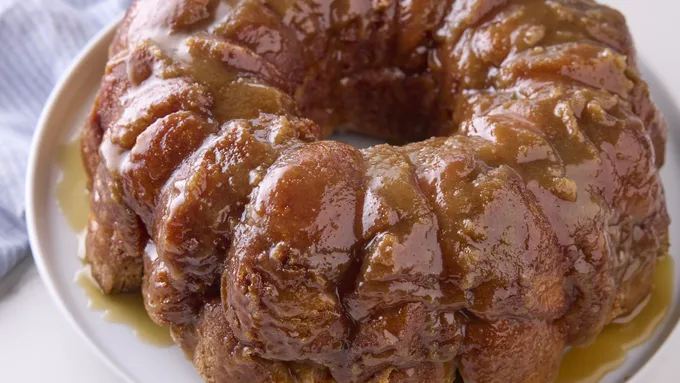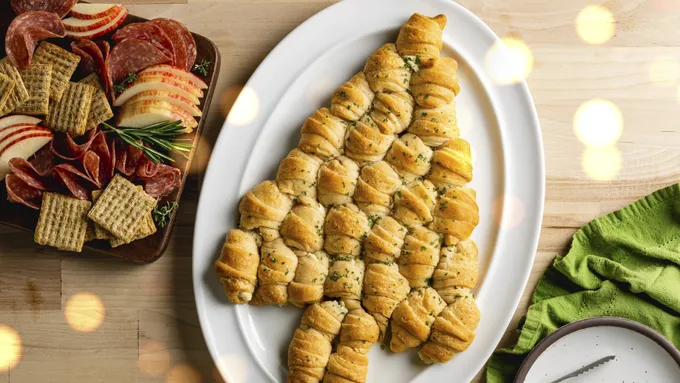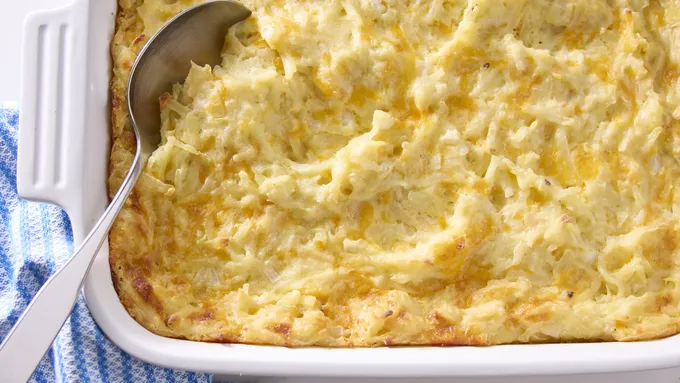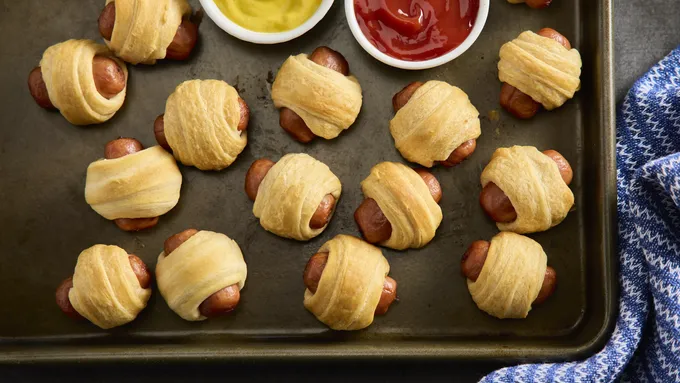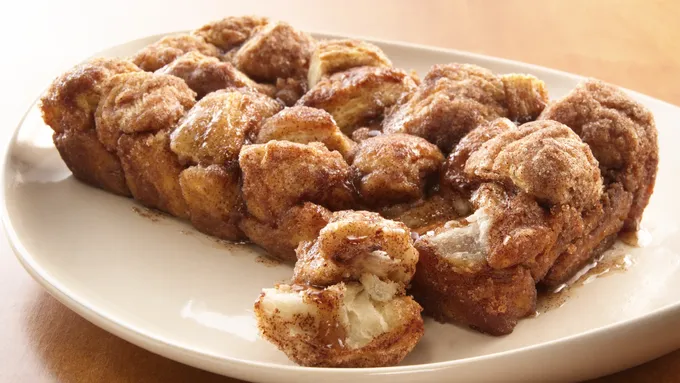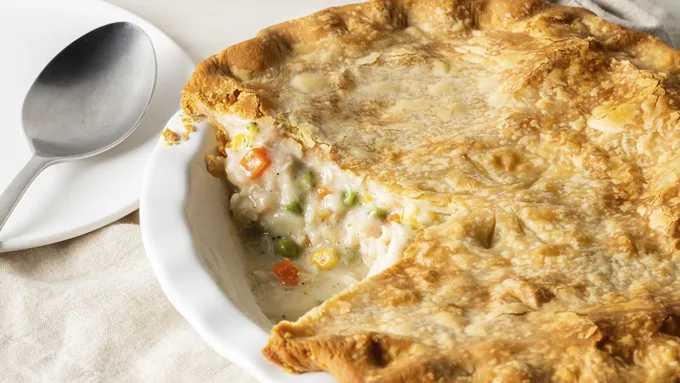(function() {
document.addEventListener('DOMContentLoaded', function() {
var componentMetadata = JSON.parse('\x7b\x22componentName\x22\x3a\x22ActionToolbar_8cde4e8f-419d-4c18-ae93-27f0876cad56\x22,\x22deferOptions\x22\x3a\x7b\x22deferComponent\x22\x3afalse,\x22deferType\x22\x3a\x22None\x22,\x22deferId\x22\x3a\x22r59a54a6af8504d06bfa0d85c969a07bc\x22,\x22deferredContainerId\x22\x3a\x22\x2fmain\x2frdpRecipeDetailToolbar\x22,\x22deferredContainerView\x22\x3anull\x7d,\x22viewName\x22\x3a\x22ActionToolbar\x22\x7d');
var configuration = {"contentId":"3c6f7c48-baba-46ea-9c45-3bfb3cb9362f","toolbarSettings":{"id":"8cde4e8f-419d-4c18-ae93-27f0876cad56","registrationUrl":"/GMI/CoreSites/PB/Home/register/reg-fp","regAction":"FAVORITE","eSourceCode":11275,"namePassedToEvents":"RDPToolbar_LOWER","buttons":[{"addFavoriteErrorMessage":"Sorry, something went wrong. Please save again.","removeFavoriteErrorMessage":"Error occurred while removing from favorites","registrationUrl":"/GMI/CoreSites/PB/Home/register/reg-fp","regAction":"FAVORITE","eSourceCode":11275,"isCurrentUserAnonymous":false,"isFavoriteItem":false,"id":"351369d5-f1b1-4a90-b495-16074575bb8a","allowedForAnonymousUsers":false,"type":"Favorite","displayName":"Save","toggleDisplayName":"Saved","namePassedToEvents":"Favorite","cssClassName":"atButtonFavorite","privacyOptOutMessage":"\u003cdiv class=\u0027privacyMessage\u0027\u003e\n\u003ch3\u003eThis feature is not available with your current cookie settings.\u003c/h3\u003e\n\u003cp\u003eYou can \u003ca href=\u0027#\u0027 data-show-preference-center=\u00271\u0027\u003eupdate your privacy settings\u003c/a\u003e to enable this content. Please enable “Functional Cookies” to use this feature.\u003c/p\u003e\n\u003c/div\u003e","showPrivacyOptOutMessage":false},{"providerName":"pinterest","providerNamePassedToEvents":"Pinterest","shareUrlFormat":"//pinterest.com/pin/create/link/?url={0}","id":"b99d19c0-3dd8-401f-b48b-9d30cca303e2","allowedForAnonymousUsers":true,"type":"Social","displayName":"Pin","toggleDisplayName":"","namePassedToEvents":"Pinterest","cssClassName":"atButtonPinterest","privacyOptOutMessage":"\u003cdiv class=\u0027privacyMessage\u0027\u003e\n\u003ch3\u003eThis feature is not available with your current cookie settings.\u003c/h3\u003e\n\u003cp\u003eYou can \u003ca href=\u0027#\u0027 data-show-preference-center=\u00271\u0027\u003eupdate your privacy settings\u003c/a\u003e to enable this content. Please enable “Functional Cookies” to use this feature.\u003c/p\u003e\n\u003c/div\u003e","showPrivacyOptOutMessage":false},{"layoutParameter":"p%3d1","id":"c2dcfc49-57b5-46c4-a265-2594529e7dae","allowedForAnonymousUsers":true,"type":"Print","displayName":"Print","toggleDisplayName":"","namePassedToEvents":"Print","cssClassName":"atButtonPrint","privacyOptOutMessage":"\u003cdiv class=\u0027privacyMessage\u0027\u003e\n\u003ch3\u003eThis feature is not available with your current cookie settings.\u003c/h3\u003e\n\u003cp\u003eYou can \u003ca href=\u0027#\u0027 data-show-preference-center=\u00271\u0027\u003eupdate your privacy settings\u003c/a\u003e to enable this content. Please enable “Functional Cookies” to use this feature.\u003c/p\u003e\n\u003c/div\u003e","showPrivacyOptOutMessage":false},{"nestedButtons":[{"templateId":"25dd0d5d-57f4-47c6-a2e1-4de692d643eb","dialogHeading":"Email Recipe","emailCode":"PB_ContentEmail","dialogSettings":{"cancelButtonText":"Cancel","copyToSenderLabel":"Send a copy to myself","emailAddressesLabel":"* Email Address","emailInstructionText":"Separate email addresses with commas","fromText":"From:","privacyPolicyText":"\u003cp\u003e\u0026copy;2025 General Mills, Inc. All Rights Reserved. This information will only be used to send an email to your friend(s) and will not be saved. Please read our \u003ca rel=\u0022noopener noreferrer\u0022 rel=\u0022noopener noreferrer\u0022 href=\u0022http://www.generalmills.com/company/privacy-policies/privacy-policy-us\u0022 target=\u0022_blank\u0022 shape=\u0022rect\u0022\u003ePrivacy Policy\u003c/a\u003e.\u003c/p\u003e","requiredFieldText":"* Required","sendButtonText":"Send","senderEmailAddressLabel":"* Your Email Address","senderFirstNameLabel":"* Your First Name","sendToText":"Send To:"},"id":"80c3b664-b383-41b5-b97a-91845639d5a0","allowedForAnonymousUsers":true,"type":"Email","displayName":"Share via Email","toggleDisplayName":"","namePassedToEvents":"Email","cssClassName":"atButtonEmail","privacyOptOutMessage":"\u003cdiv class=\u0027privacyMessage\u0027\u003e\n\u003ch3\u003eThis feature is not available with your current cookie settings.\u003c/h3\u003e\n\u003cp\u003eYou can \u003ca href=\u0027#\u0027 data-show-preference-center=\u00271\u0027\u003eupdate your privacy settings\u003c/a\u003e to enable this content. Please enable “Functional Cookies” to use this feature.\u003c/p\u003e\n\u003c/div\u003e","showPrivacyOptOutMessage":false},{"providerName":"facebook","providerNamePassedToEvents":"Facebook","shareUrlFormat":"//facebook.com/sharer/sharer.php?u={0}","id":"d4600f53-4919-44a0-aed3-6b7322540b1a","allowedForAnonymousUsers":true,"type":"Social","displayName":"Share on Facebook","toggleDisplayName":"","namePassedToEvents":"Facebook","cssClassName":"atButtonFacebook","privacyOptOutMessage":"\u003cdiv class=\u0027privacyMessage\u0027\u003e\n\u003ch3\u003eThis feature is not available with your current cookie settings.\u003c/h3\u003e\n\u003cp\u003eYou can \u003ca href=\u0027#\u0027 data-show-preference-center=\u00271\u0027\u003eupdate your privacy settings\u003c/a\u003e to enable this content. Please enable “Functional Cookies” to use this feature.\u003c/p\u003e\n\u003c/div\u003e","showPrivacyOptOutMessage":false},{"successMessage":"Copied.","errorMessage":"Press Ctrl+C and Enter to copy to clipboard","successMessageDuration":3000,"errorMessageDuration":10000,"id":"13718d3d-801f-4dbf-abe1-4369ca03e9cd","allowedForAnonymousUsers":true,"type":"CopyLink","displayName":"Copy Link","toggleDisplayName":"","namePassedToEvents":"Copy","cssClassName":"atButtonCopyLink","privacyOptOutMessage":"\u003cdiv class=\u0027privacyMessage\u0027\u003e\n\u003ch3\u003eThis feature is not available with your current cookie settings.\u003c/h3\u003e\n\u003cp\u003eYou can \u003ca href=\u0027#\u0027 data-show-preference-center=\u00271\u0027\u003eupdate your privacy settings\u003c/a\u003e to enable this content. Please enable “Functional Cookies” to use this feature.\u003c/p\u003e\n\u003c/div\u003e","showPrivacyOptOutMessage":false}],"id":"168a1a35-42c5-40ba-8eaa-9e789eefeaed","allowedForAnonymousUsers":true,"type":"Reveal","displayName":"Share","toggleDisplayName":"","namePassedToEvents":"Share","cssClassName":"atButtonReveal","privacyOptOutMessage":"\u003cdiv class=\u0027privacyMessage\u0027\u003e\n\u003ch3\u003eThis feature is not available with your current cookie settings.\u003c/h3\u003e\n\u003cp\u003eYou can \u003ca href=\u0027#\u0027 data-show-preference-center=\u00271\u0027\u003eupdate your privacy settings\u003c/a\u003e to enable this content. Please enable “Functional Cookies” to use this feature.\u003c/p\u003e\n\u003c/div\u003e","showPrivacyOptOutMessage":false},{"errorMessage":"","id":"f9fa8e1c-2dc5-4470-8ca2-83ff8bd5ffd2","allowedForAnonymousUsers":true,"type":"WakeLock","displayName":"Keep Screen On","toggleDisplayName":"","namePassedToEvents":"Wakelock","cssClassName":"atButtonWakeLock","privacyOptOutMessage":"\u003cdiv class=\u0027privacyMessage\u0027\u003e\n\u003ch3\u003eThis feature is not available with your current cookie settings.\u003c/h3\u003e\n\u003cp\u003eYou can \u003ca href=\u0027#\u0027 data-show-preference-center=\u00271\u0027\u003eupdate your privacy settings\u003c/a\u003e to enable this content. Please enable “Functional Cookies” to use this feature.\u003c/p\u003e\n\u003c/div\u003e","showPrivacyOptOutMessage":false}],"isSticky":true},"userSettings":{"isCurrentUserAnonymous":true,"isFavoriteItem":false,"isAnonymousUserWithFavorites":false},"pageAttributes":{"url":"https%3a%2f%2fwww.pillsbury.com%2frecipes%2fsourdough-bread%2f3c6f7c48-baba-46ea-9c45-3bfb3cb9362f","contentId":"3c6f7c48-baba-46ea-9c45-3bfb3cb9362f"},"recaptchaPublicKey":"6LceAigUAAAAAC8aIQvJ9yRpRl3r1ZBKbou-tIDe"};
var moduleName = 'actionToolbar';
var isVueModule = true;
GeneralMills.PandoSites.RegisterControlInstance(moduleName, configuration, componentMetadata, isVueModule)
});
})();
(function() {
document.addEventListener('DOMContentLoaded', function() {
var componentMetadata = JSON.parse('\x7b\x22componentName\x22\x3a\x22ThirdPartyScript_f35db259-ef82-4f2a-a03a-a78b2f56f3ce\x22,\x22deferOptions\x22\x3a\x7b\x22deferComponent\x22\x3atrue,\x22deferType\x22\x3a\x22OnDemand\x22,\x22deferId\x22\x3a\x22r205b34f4b182421fb063b9ac57419dd6\x22,\x22deferredContainerId\x22\x3a\x22\x2fmain\x2frdpBuyNow\x22,\x22deferredContainerView\x22\x3a\x22ThirdPartyScript\x22\x7d,\x22viewName\x22\x3a\x22ThirdPartyScript\x22\x7d');
var configuration = {"domContent":"\u003cdiv style=\u0022color:#002e6d;background-color:#fff\u0022\u003e\u003cbutton id=\u0022pear-recipe-target\u0022 class=\u0022recipeNutritionExpandButtonArea expandLink buttonAsLink\u0022\u003eSHOP RECIPE\u003c/button\u003e\u003c/div\u003e","scriptContent":"https://offers.pearcommerce.com/js/sdk.js?config={\u0022vendorId\u0022:\u00221696427556640128\u0022,\u0022widget\u0022:\u0022recipes\u0022}","onLoadScript":"","scriptReferenceId":"PearCommerceRecipe_scriptId"};
var moduleName = 'thirdPartyScript';
var isVueModule = true;
GeneralMills.PandoSites.RegisterControlInstance(moduleName, configuration, componentMetadata, isVueModule)
});
})();
Ingredients
Starter
-
1
pkg. active dry yeast
-
2
cups warm water
-
3 1/2
cups all-purpose flour
-
1
tablespoon sugar or honey
Bread
-
1
cup starter
-
5 1/2
to 6 cups all-purpose flour
-
1/4
cup sugar
-
1
tablespoon salt
-
1 2/3
cups warm water
-
1/3
cup oil
(function() {
document.addEventListener('DOMContentLoaded', function() {
var componentMetadata = JSON.parse('\x7b\x22componentName\x22\x3a\x22RecipeIngredients_e8af84a8-5198-47ca-bc1c-daf22247ecf7\x22,\x22deferOptions\x22\x3a\x7b\x22deferComponent\x22\x3afalse,\x22deferType\x22\x3a\x22None\x22,\x22deferId\x22\x3a\x22r32b17d6a36b5460e81200ca9a8f0f5ce\x22,\x22deferredContainerId\x22\x3a\x22\x2fmain\x2frdpIngredients\x22,\x22deferredContainerView\x22\x3anull\x7d,\x22viewName\x22\x3a\x22RecipeIngredients\x22\x7d');
var configuration = {};
var moduleName = 'recipeIngredients';
var isVueModule = false;
GeneralMills.PandoSites.RegisterControlInstance(moduleName, configuration, componentMetadata, isVueModule)
});
})();
(function() {
document.addEventListener('DOMContentLoaded', function() {
var componentMetadata = JSON.parse('\x7b\x22componentName\x22\x3a\x22DoubleClick_ada1eeda-a2cc-40ec-b38b-ce2b90014cba\x22,\x22deferOptions\x22\x3a\x7b\x22deferComponent\x22\x3atrue,\x22deferType\x22\x3a\x22OnDemand\x22,\x22deferId\x22\x3a\x22r51eb5e0598e448f494a3d3c18397816b\x22,\x22deferredContainerId\x22\x3a\x22\x2fmain\x2frdpSecondaryAd\x22,\x22deferredContainerView\x22\x3a\x22DoubleClick\x22\x7d,\x22viewName\x22\x3a\x22DoubleClick\x22\x7d');
var configuration = {"adId":"OMP/pillsbury/recipe/300x250_bottom","minPageWidth":"1000","maxPageWidth":"9999","defaultMinPageWidth":"1000","defaultMaxPageWidth":"9999","size":"[[300,600],[300,250]]","refreshWhenViewed":false,"adContainerId":"e43d6973-84ff-4758-8dd0-3be882faa265","doubleClickAdContainerId":"7a34cfd7-4e86-49e1-b9f9-e066d1d55621","adCaptionText":"Advertisement","networkCode":"/15704463/","relevantMetadata":[null,null],"privacyOptOut":false,"isThirdPartyProvider":true,"thirdPartyTag":"\u003cdiv align=\u0022center\u0022 data-freestar-ad=\u0022__300x600\u0022 id=\u0022af998ce8715fd455a8f22e0e24f79d7c4\u0022 data-placement-name=\u0022pillsbury-com_right_rail_1\u0022\u003e\u003c/div\u003e","sovrnCssClass":"","responsive":true,"contentType":"Recipe","itemId":"3c6f7c48-baba-46ea-9c45-3bfb3cb9362f","continuesBelowText":"Recipe Continues Below"};
var moduleName = 'thirdPartyProvider';
var isVueModule = true;
GeneralMills.PandoSites.RegisterControlInstance(moduleName, configuration, componentMetadata, isVueModule)
});
})();
-
In large nonmetal bowl, dissolve yeast in 2 cups warm water (105 to 115°F.); let stand 5 minutes. Add 3 1/2 cups flour and 1 tablespoon sugar; blend well. Cover loosely with plastic wrap and cloth towel. Let stand in warm place (80 to 85°F.) for 5 days, stirring at least once each day.
-
When starter is ready for use, it is bubbly and may have a yellow liquid layer on top. Stir well before using.*
-
Place 1 cup starter in large bowl.** Add 2 cups flour, 1/4 cup sugar, salt, 1 2/3 cups warm water (105 to 115°F.) and oil; blend well. Stir in 2 1/2 to 2 3/4 cups flour until dough pulls cleanly away from sides of bowl.
-
On floured surface, knead in remaining 1 to 1 1/4 cups flour until dough is smooth and elastic, about 5 minutes.
-
Place dough in greased bowl; cover loosely with plastic wrap and cloth towel. Let rise in warm place for at least 8 hours or overnight.
-
Grease 3 cookie sheets or 9-inch round cake pans.*** Uncover dough. Punch down dough several times to remove air bubbles. Divide dough into 3 equal parts. Work dough with hands to remove all air bubbles. Shape into round loaves. Place on greased cookie sheets. Cover; let rise in warm place until doubled in size, 2 to 3 hours.
-
Heat oven to 400°F. Uncover dough. With sharp knife, make three 1/4-inch-deep slashes on top of each loaf. Bake at 400°F. for 20 to 25 minutes or until loaves sound hollow when lightly tapped. Immediately remove from cookie sheets; cool on wire racks for 1 hour or until completely cooled.
(function() {
document.addEventListener('DOMContentLoaded', function() {
var componentMetadata = JSON.parse('\x7b\x22componentName\x22\x3a\x22RecipeSteps_e8af84a8-5198-47ca-bc1c-daf22247ecf7\x22,\x22deferOptions\x22\x3a\x7b\x22deferComponent\x22\x3atrue,\x22deferType\x22\x3a\x22OnDemand\x22,\x22deferId\x22\x3a\x22r62bd040338884dbea6e4f38d2bb2a974\x22,\x22deferredContainerId\x22\x3a\x22\x2fmain\x2frdpSteps\x22,\x22deferredContainerView\x22\x3a\x22RecipeDetailRedesign\x22\x7d,\x22viewName\x22\x3a\x22RecipeSteps\x22\x7d');
var configuration = {"initAreImagesHidden":false,"hideImagesEventName":"HideStepShots","showImagesEventName":"ShowStepShots","hideImagesButtonText":"Hide Images","showImagesButtonText":"Show Images","hideImagesClass":"rdpHideStepImages"};
var moduleName = 'recipeStepShots';
var isVueModule = true;
GeneralMills.PandoSites.RegisterControlInstance(moduleName, configuration, componentMetadata, isVueModule)
});
})();
90
Calories
2g
Total Fat
2g
Protein
17g
Total Carbohydrate
2g
Sugars
Nutrition Facts
Serving Size:
1 Slice
- Calories
- 90
- Calories from Fat
- 20
- Total Fat
- 2g
- 3%
- Cholesterol
- 0mg
- 0%
- Sodium
- 135mg
- 6%
- Total Carbohydrate
- 17g
- 6%
- Dietary Fiber
- 1g
- 4%
- Sugars
- 2g
- Protein
- 2g
- Vitamin A
- 0%
- 0%
- Vitamin C
- 0%
- 0%
- Calcium
- 0%
- 0%
- Iron
- 6%
- 6%
Exchanges:
1 Starch; 1 Other Carbohydrate;
*Percent Daily Values are based on a 2,000 calorie diet.
(function() {
document.addEventListener('DOMContentLoaded', function() {
var componentMetadata = JSON.parse('\x7b\x22componentName\x22\x3a\x22RecipeNutritionNonPrintRedesign_e8af84a8-5198-47ca-bc1c-daf22247ecf7\x22,\x22deferOptions\x22\x3a\x7b\x22deferComponent\x22\x3atrue,\x22deferType\x22\x3a\x22Simple\x22,\x22deferId\x22\x3a\x22r2b1adf0390684c0490a6941264ececee\x22,\x22deferredContainerId\x22\x3a\x22\x2fmain\x2frdpNutrition\x22,\x22deferredContainerView\x22\x3a\x22RecipeDetailRedesign\x22\x7d,\x22viewName\x22\x3a\x22RecipeNutritionNonPrintRedesign\x22\x7d');
var configuration = {"initIsExpanded":false,"expandEventName":"NutritionExpand","collapseEventName":"NutritionCollapse"};
var moduleName = 'recipeNutrition';
var isVueModule = true;
GeneralMills.PandoSites.RegisterControlInstance(moduleName, configuration, componentMetadata, isVueModule)
});
})();
{{tipItemHeadingFormat.replace('{0}',props.index + 1)}}
(function() {
document.addEventListener('DOMContentLoaded', function() {
var componentMetadata = JSON.parse('\x7b\x22componentName\x22\x3a\x22RecipeTipsCarousel_e8af84a8-5198-47ca-bc1c-daf22247ecf7\x22,\x22deferOptions\x22\x3a\x7b\x22deferComponent\x22\x3atrue,\x22deferType\x22\x3a\x22Simple\x22,\x22deferId\x22\x3a\x22r14cd7d23a685499ab79110b9c184fc23\x22,\x22deferredContainerId\x22\x3a\x22\x2fmain\x2frdpTips\x22,\x22deferredContainerView\x22\x3a\x22RecipeDetailRedesign\x22\x7d,\x22viewName\x22\x3a\x22RecipeTipsCarousel\x22\x7d');
var configuration = {"title":"Sourdough Bread","introduction":"\u003cp\u003eEvery home baker dreams of the day they pull a perfectly baked, crusty sourdough bread from the oven, with that distinct tangy flavor, the satisfying crunch of the crust, and the comforting, soft interior. When you’ve taken the time to learn and develop your skills as a sourdough bread baker, invested in the starter and the dough, crafted a loaf from scratch and then placed it in a hot oven, to be rewarded shortly after with an edible creation that is as beautiful to look at as it is delicious is a feeling unlike any other.\u003c/p\u003e\n\u003cp\u003eOf course, we love a quick cookie recipe or a fresh-baked fruit pie, but nothing compares to the results of the love and labor invested in homemade sourdough bread. It’s why this recipe has endured for centuries and across continents, from professional bakeries to home kitchens. Whether you have a slice dipped in French toast batter and cooked on the griddle for breakfast, or use it to make your favorite sandwich extra-flavorful, or like to eat a simple slice slathered in butter as a special snack, sourdough bread is a versatile loaf that can be enjoyed any time of day.\u003c/p\u003e\n\u003cp\u003eBut what is sourdough bread, exactly, and what makes it so unique?\u003c/p\u003e \n\u003cp\u003eAt its most basic level, sourdough is a combination of wild yeast and lactic acid bacteria with flour and water. The resulting dough has a characteristic tangy flavor due to the fermentation process, lending sourdough its signature taste and texture. But the true secret behind this unique bread is the sourdough starter, a fermented mixture of flour and water that creates a leavening agent. Nurturing a sourdough starter might sound like a laborious task but it just takes time. And trust us—your patience will be rewarded when you have a beautiful, homemade loaf of bread. \u003c/p\u003e\n\u003cp\u003eCreating a homemade sourdough bread is not just about the product: It’s about the experience, too. It connects us with the ancient art of breadmaking, letting us slow down and embrace the process step by step. After all, they say good things come to those who wait.\u003c/p\u003e \n\u003cp\u003eThat said, we\u0027ve made the journey straightforward for you. Explore our simplified sourdough recipe and starter guide that presents the process in an accessible way.\u003c/p\u003e \n\u003cp\u003eReady to get started? Then dive right into our detailed, step-by-step recipe. The Key to this homemade sourdough recipe is to create the starter 5 days before you want to bake your bread . While Sourdough Bread takes some planning, you’ll love every extra minute when you bite into the tangy, chewy bread topped with your favorite jam or butter. It’s all about discovering the joy of creating something uniquely yours. So roll up your sleeves and let’s get baking!\u003c/p\u003e","servingSize":"1 Slice","image":{"small":{"media":"(min-width: 0px)","src":"https://mojo.generalmills.com/api/public/content/K97G0FZ3RLSjt3NvYkiO-Q_webp_base.webp?v=aa621915\u0026t=e724eca7b3c24a8aaa6e089ed9e611fd"},"medium":{"media":"(min-width: 500px)","src":"https://mojo.generalmills.com/api/public/content/K97G0FZ3RLSjt3NvYkiO-Q_webp_base.webp?v=aa621915\u0026t=191ddcab8d1c415fa10fa00a14351227"},"large":{"media":"(min-width: 767px)","src":"https://mojo.generalmills.com/api/public/content/K97G0FZ3RLSjt3NvYkiO-Q_webp_base.webp?v=aa621915\u0026t=191ddcab8d1c415fa10fa00a14351227"},"alt":"Sourdough Bread"},"contributor":{"label":"By","name":"Pillsbury Kitchens","profileUrl":"/about-us","displayDate":{"label":"Updated","date":"Jul 23, 2024"}},"ingredientGroups":[{"name":"Starter","ingredients":[{"quantity":"1","description":"pkg. active dry yeast"},{"quantity":"2","description":"cups warm water"},{"quantity":"3 1/2","description":"cups all-purpose flour"},{"quantity":"1","description":"tablespoon sugar or honey"}]},{"name":"Bread","ingredients":[{"quantity":"1","description":"cup starter"},{"quantity":"5 1/2","description":"to 6 cups all-purpose flour"},{"quantity":"1/4","description":"cup sugar"},{"quantity":"1","description":"tablespoon salt"},{"quantity":"1 2/3","description":"cups warm water"},{"quantity":"1/3","description":"cup oil"}]}],"steps":[{"description":"In large nonmetal bowl, dissolve yeast in 2 cups warm water (105 to 115°F.); let stand 5 minutes. Add 3 1/2 cups flour and 1 tablespoon sugar; blend well. Cover loosely with plastic wrap and cloth towel. Let stand in warm place (80 to 85°F.) for 5 days, stirring at least once each day. ","stepShotImageUrl":"//mojo.generalmills.com/api/public/content/m9RuwEDXSBiwwjFWLbMYkQ_webp_base.webp?v=c0b8ba47\u0026t=51a43a57af4046789e5a7f20567b1195"},{"description":"When starter is ready for use, it is bubbly and may have a yellow liquid layer on top. Stir well before using.*","stepShotImageUrl":"//mojo.generalmills.com/api/public/content/WdVoVo_dSGqJZl7Ffo4Mdw_webp_base.webp?v=a5a79623\u0026t=51a43a57af4046789e5a7f20567b1195"},{"description":"Place 1 cup starter in large bowl.** Add 2 cups flour, 1/4 cup sugar, salt, 1 2/3 cups warm water (105 to 115°F.) and oil; blend well. Stir in 2 1/2 to 2 3/4 cups flour until dough pulls cleanly away from sides of bowl.","stepShotImageUrl":"//mojo.generalmills.com/api/public/content/fYV1I0nIT6mL8NWiEb6EIw_webp_base.webp?v=7aae0209\u0026t=51a43a57af4046789e5a7f20567b1195"},{"description":"On floured surface, knead in remaining 1 to 1 1/4 cups flour until dough is smooth and elastic, about 5 minutes. ","stepShotImageUrl":"//mojo.generalmills.com/api/public/content/QVaLb73eRgS_gYCV_c41lQ_webp_base.webp?v=515b045e\u0026t=51a43a57af4046789e5a7f20567b1195"},{"description":"Place dough in greased bowl; cover loosely with plastic wrap and cloth towel. Let rise in warm place for at least 8 hours or overnight.","stepShotImageUrl":"//mojo.generalmills.com/api/public/content/FLZPNkcSSj2HxT7Jfaz1Ig_webp_base.webp?v=6e45d6eb\u0026t=51a43a57af4046789e5a7f20567b1195"},{"description":"Grease 3 cookie sheets or 9-inch round cake pans.*** Uncover dough. Punch down dough several times to remove air bubbles. Divide dough into 3 equal parts. Work dough with hands to remove all air bubbles. Shape into round loaves. Place on greased cookie sheets. Cover; let rise in warm place until doubled in size, 2 to 3 hours.","stepShotImageUrl":"//mojo.generalmills.com/api/public/content/Kh9i_TmnTkaT8IqMU-0eDA_webp_base.webp?v=477f1c56\u0026t=51a43a57af4046789e5a7f20567b1195"},{"description":"Heat oven to 400°F. Uncover dough. With sharp knife, make three 1/4-inch-deep slashes on top of each loaf. Bake at 400°F. for 20 to 25 minutes or until loaves sound hollow when lightly tapped. Immediately remove from cookie sheets; cool on wire racks for 1 hour or until completely cooled.","stepShotImageUrl":"//mojo.generalmills.com/api/public/content/0IPIw25MQf2fx6MC79-3dA_webp_base.webp?v=2bdc8fdf\u0026t=51a43a57af4046789e5a7f20567b1195"}],"tips":[{"title":"","description":"Create homemade comfort with this Sourdough Bread and Starter Recipe. Plan ahead, savor the process, and indulge in chewy tangy perfection!","category":"Rich Snippet","tipShots":[]},{"title":"","description":"If starter will not be used immediately, cover and refrigerate until ready to use. Return to room temperature before using. If desired, starter can be replenished for future use. After removing 1 cup starter, add to remaining starter 1 cup flour, 2/3 cup warm water (105 to 115°F.) and 1 teaspoon sugar or honey; blend well. Cover loosely with plastic wrap and cloth towel. Let stand in a warm place (80 to 85°F.) for 10 to 12 hours or overnight. The starter will become bubbly and rise. Stir, cover and store in the refrigerator. Repeat this process each time the starter is used. If starter is used once a week it will remain active. If not used, stir in 1 teaspoon sugar or honey weekly. Three 8x4-inch loaf pans can be used. Bake at 400°F. for 25 to 30 minutes.","category":"Techniques","tipShots":[]},{"title":"","description":"Need a faster recipe? \u003ca href=\u0022https://www.pillsbury.com/recipes/whole-wheat-bread/398b41e9-27bb-454c-8515-79827486abb7\u0022\u003eWhole Wheat Bread\u003c/a\u003e is made with whole wheat flour and active dry yeast for a sandwich-ready bread every lunchbox needs.","category":"Recipe/Ingredient Facts","tipShots":[]}],"kitchenTips":[{"title":"","description":"If starter will not be used immediately, cover and refrigerate until ready to use. Return to room temperature before using. If desired, starter can be replenished for future use. After removing 1 cup starter, add to remaining starter 1 cup flour, 2/3 cup warm water (105 to 115°F.) and 1 teaspoon sugar or honey; blend well. Cover loosely with plastic wrap and cloth towel. Let stand in a warm place (80 to 85°F.) for 10 to 12 hours or overnight. The starter will become bubbly and rise. Stir, cover and store in the refrigerator. Repeat this process each time the starter is used. If starter is used once a week it will remain active. If not used, stir in 1 teaspoon sugar or honey weekly. Three 8x4-inch loaf pans can be used. Bake at 400°F. for 25 to 30 minutes.","category":"Techniques","tipShots":[]},{"title":"","description":"Need a faster recipe? \u003ca href=\u0022https://www.pillsbury.com/recipes/whole-wheat-bread/398b41e9-27bb-454c-8515-79827486abb7\u0022\u003eWhole Wheat Bread\u003c/a\u003e is made with whole wheat flour and active dry yeast for a sandwich-ready bread every lunchbox needs.","category":"Recipe/Ingredient Facts","tipShots":[]}],"additionalContent":[{"title":"The History of Sour Doughs","description":"\u003cp\u003eThe history of homemade sourdough bread can likely be traced all the way back to ancient Egypt, around 3000 B.C.M.\u003c/p\u003e \n\n\u003cp\u003e\u003cb\u003eEarliest Origins:\u003c/b\u003e Like many beloved recipes we know today, sourdough was actually discovered by accident, when dough was left out and colonized by wild yeast spores. Fast-forward to 800 B.C., and the concept of sourdough bread was adopted by ancient Greeks and Romans, who developed the oven-baking process and more advanced breadmaking skills.\u003c/p\u003e\n\n\u003cp\u003e\u003cb\u003eGold Rush Era:\u003c/b\u003e For hundreds of years, the idea of natural leavening—that is, naturally occurring wild yeast and lactobacilli bacteria (which is present in the environment) combining to ferment dough—endured among bakers. Sourdough gained popularity again during the California Gold Rush in the mid-19th century, when miners and settlers relied on the sourdough starter as a reliable source of leavening for bread when commercial yeast was scarce.\u003c/p\u003e\n\n\u003cp\u003e\u003cb\u003eModern Resurgence:\u003c/b\u003e In recent years, sourdough bread has experienced a resurgence in popularity, driven by interest in traditional and artisanal baking methods. Home bakers and professional bakeries alike appreciate sourdough for its complex flavor profile, chewy texture, and the satisfaction of creating bread from scratch using natural fermentation.\u003c/p\u003e","category":"SEO Content_1","tipShots":[]},{"title":"The Secrets of Sourdough Starter ","description":"\u003cp\u003eThe secret to a good sourdough bread recipe is actually the sourdough starter recipe! If you have a robust, healthy starter, you’re already halfway to success in your bread-baking journey. The starter is important not only as the leavening agent in your bread, but it also adds flavor-rich acids to your bread to give it its signature flavor and texture.\u003c/p\u003e\n\u003ch3\u003e\u003cb\u003eHow to “Feed” a Sourdough Starter\u003c/b\u003e\u003c/h3\u003e\n\u003cp\u003e The key to a good starter is to feed it regularly. First, combining yeast and warm water with sugar and flour is all you need to get started. Then, to keep the starter alive and well, give it a good stir every day for five days. When it is ready to use, it will be bubbly and may have a yellow liquid layer on the top. That’s normal! Give it another good stir and then use it in your recipe. If you’re not planning to use it right away or want to keep a starter on hand for regular baking, check out our \u003cb\u003eKitchen Tips\u003c/b\u003e for our simple feeding guide.\u003c/p\u003e\n\u003ch3\u003e\u003cb\u003eWhen Should I Discard My Starter?\u003c/b\u003e\u003c/h3\u003e \n\u003cp\u003eThe term discard can be confusing. Discard can refer to the starter that is removed and set aside as part of the feeding process, but it can also refer to literally throwing away extra starter. When starter is fed, a portion of the starter is removed (the discard) to leave behind a small amount of starter to feed and use for your next batch of bread. The discard can either be thrown away, stored in the refrigerator, or used immediately in a recipe that calls for sourdough discard. For this recipe, the starter is ready to be used or fed when it is bubbly and potentially has a thin layer of yellow liquid on the top.\u003c/p\u003e\n\u003ch3\u003e\u003cb\u003eCan You Kill a Starter?\u003c/h3\u003e\u003c/b\u003e \n\u003cp\u003eIt’s actually quite difficult to kill a sourdough starter! Using water that is above 120°F can kill the wild yeast in the starter but if your starter is full of tiny bubbles or foaming, is topped with a clear, yellow, or grayish liquid, or smells of acetone or vinegar, it just is time to feed it.\u003c/p\u003e \n\u003ch3\u003e\u003cb\u003eHow Do I Know My Starter Has Gone Bad?\u003c/b\u003e\u003c/h3\u003e \n\u003cp\u003eIt is very rare for starter to go bad. If the starter begins to mold, has a colored appearance (pink or orange), or a foul smell then it may be time to throw it out and start over. However, if the starter has a layer of yellow to grayish liquid on top it is still okay to use – it just means it is hungry and needs to be fed.\u003c/p\u003e","category":"SEO Content_2","tipShots":[]},{"title":"Developing Your Sour Dough","description":"\u003cp\u003eOnce you’ve got a good starter going, it’s time to make the sourdough recipe. For full detailed instructions, follow the recipe below, but here are some extra tips to take along with you on your sourdough baking journey.\u003c/p\u003e\n\u003cp\u003e\u003cb\u003eStay Slow and Steady:\u003c/b\u003e When you make sourdough, the trick is to be gentle every step of the way. There’s no need to use a heavy hand to knead the dough or stir in any ingredients.\u003c/p\u003e\n\u003cp\u003e\u003cb\u003eUse the Right Utensils:\u003c/b\u003e Sourdough can be sensitive to certain materials, such as wood and metal, as the acids can react to them. Instead, use your glass, ceramic, or plastic utensils and bowls when making your recipe for sour bread.\u003c/p\u003e\n\u003cp\u003e\u003cb\u003eFollow the Cues of the Dough:\u003c/b\u003e As mentioned above, the key to successful sourdough bread is to pay attention to the dough itself, rather than exactly what the instructions read. In other words, if the dough doesn’t seem soft, smooth, and elastic after kneading for five minutes, continue to knead until it does. Or, if the bread hasn’t doubled in size in 2 to 3 hours, give it additional time to rest and rise. Being aware of how your sourdough should look and feel each step of the way is a huge factor in yielding a perfect loaf. \u003c/p\u003e","category":"SEO Content_3","tipShots":[]}],"faq":[{"title":"How Can I Make Bread Designs?","description":"\u003cp\u003eDecorating the tops of your sourdough loaves with bread designs is a great way to add your own creative touch to your edible creations. The process of making small cuts on the top of the loaves before baking is called scoring. Not only is it useful, as it helps release trapped air in the loaf as it bakes and keeps the bread from splitting unattractively along the top, but it’s also a way to turn a loaf of bread into a work of art.\u003c/p\u003e\n\u003cp\u003eTo score your loaf, you’ll need a very sharp blade. Often bread bakers will use a razor blade attached to a wooden handle, called a bread lame. This special tool is useful to make precise, accurate scores in the top of your bread, but you can also manage these marks with a sharp kitchen knife or handheld razor blade (but be extremely careful). Here are a few quick tips for the best bread designs:\u003c/p\u003e\n\u003cp\u003e\u003cb\u003eUse a Sharp Razor Blade:\u003c/b\u003e The sharper the blade, the easier it will slice into the dough. You don’t want to drag a dull blade along the loaf.\u003c/p\u003e\n\u003cp\u003e\u003cb\u003eBe Gentle:\u003c/b\u003e Use a light touch when scoring the dough. You don’t need to make deep slashes; 1/4-inch cuts are perfect.\u003c/p\u003e\n\u003cp\u003e\u003cb\u003eAngle the Blade as You Score:\u003c/b\u003e By making the slits at an angle, you can make a score line that’s just deep enough without pressing down onto the dough, which can flatten it once baked.\u003c/p\u003e","category":"FAQ_1","tipShots":[]},{"title":"What Should I Use Sourdough For?","description":"\u003cp\u003eOne of our favorite aspects of sourdough is that it is incredible versatile and can be used for a variety of yummy recipes, from toast to sandwiches, stuffing, to salads. Here are some of our go-to Pillsbury recipes that can use this lovely, tangy loaf as a base to make all the flavors come to life.\u003c/p\u003e\n\u003ca href=\u0022https://www.pillsbury.com/recipes/dill-havarti-sourdough-toast/241932a1-77ef-4e6d-b6e4-4aa6bea2e921/\u0022\u003eDill-Havarti Sourdough Toast\u003c/a\u003e\n\u003cp\u003eThe only thing better than fresh-baked sourdough is fresh-baked sourdough topped with fresh dill and melty cheese.\u003c/p\u003e\n\u003ca href=\u0022https://www.pillsbury.com/recipes/flank-steak-and-mushrooms-on-sourdough-bread-with-blue-cheese-sauce/4663ed17-67ba-4ff5-8fe0-4ab20b8558fb/\u0022\u003eBlue Cheese, Steak, and Mushroom Sandwich\u003c/a\u003e\n\u003cp\u003eFlank steak + blue cheese crumbles + sauteed mushrooms = the perfect sourdough sandwich.\u003c/p\u003e\n\u003ca href=\u0022https://www.pillsbury.com/recipes/grilled-vegetable-panzanella/13ba5e8f-8514-4af7-8dc9-d173864d03ce/\u0022\u003eGrilled Vegetable Panzanella\u003c/a\u003e\n\u003cp\u003eA bounty of grilled veggies mixed with a tangy dressing and homemade sourdough bread is our kind of salad!\u003c/p\u003e\n\u003ca href=\u0022https://www.pillsbury.com/recipes/toasted-turkey-and-roasted-pepper-sandwiches/b9440b85-1c1d-45ee-8e2b-4cb7896e78ee/\u0022\u003eToasted Turkey and Roasted Pepper Sandwiches\u003c/a\u003e\n\u003cp\u003eLunchtime is made simple and delicious with this delightful turkey sandwich on sourdough bread.\u003c/p\u003e\n\u003ca href=\u0022https://www.pillsbury.com/recipes/mixed-mushroom-leek-stuffing/e47f1741-aa21-4d08-8795-98deeaca5b72/\u0022\u003eMixed Mushroom-Leek Stuffing\u003c/a\u003e\n\u003cp\u003eThis mixed mushroom side dish is packed with flavor, thanks to a medley of fresh mushrooms and a whole lot of soft sourdough bread.\u003c/p\u003e","category":"FAQ_2","tipShots":[]}],"tipCategories":[{"categoryName":"Rich Snippet","heading":"","cssClass":"recipePartMethodNote","expandOnInit":false,"expandText":"More +","collapseText":"Less -","expandEventName":"","collapseEventName":"","image":"","tips":[{"title":"","description":"Create homemade comfort with this Sourdough Bread and Starter Recipe. Plan ahead, savor the process, and indulge in chewy tangy perfection!","category":"Rich Snippet","tipShots":[]}],"isExpandable":false}],"nutritionInfo":{"configuration":{"showAsTable":false,"noNutritionInformationAvailableMessage":"No nutrition information available for this recipe","poweredByText":"\u003cp\u003eNutrition information for this recipe is estimated using a leading nutrition calculation application, but is an estimate only. Actual nutrition values will vary based on the exact ingredients or brands you may use.\u003c/p\u003e\n\u003ca href=\u0022http://developer.edamam.com\u0022\u003ePowered By \u003cimg src=\u0022-/media/C4F33FD467AB4A3AB59AAC4F6306AB04.ashx\u0022 alt=\u0022Edamam\u0022 /\u003e\u003c/a\u003e","nutritionChartTitle":"Nutrition Facts","nutritionInformationLabel":"Nutrition","servingSizeText":"Serving Size:","dailyValuesDisclaimer":"*Percent Daily Values are based on a 2,000 calorie diet.","percentDailyValueText":"% Daily Value","percentDailyValueFooterTitleText":"% Daily Value*:","exchangeInformationTitleText":"Exchanges:","nutritionFactsExpandText":"More Nutrition","nutritionFactsCollapseText":"Less Nutrition"},"facts":{"vitaminA":{"amountPercent":"0%","amountUnits":"0%","title":"Vitamin A"},"vitaminC":{"amountPercent":"0%","amountUnits":"0%","title":"Vitamin C"},"calcium":{"amountPercent":"0%","amountUnits":"0%","title":"Calcium"},"iron":{"amountPercent":"6%","amountUnits":"6%","title":"Iron"},"protein":{"amountPercent":"","amountUnits":"2g","title":"Protein"},"dietaryFiber":{"amountPercent":"4%","amountUnits":"1g","title":"Dietary Fiber"},"sugars":{"amountPercent":"","amountUnits":"2g","title":"Sugars"},"totalCarbohydrate":{"amountPercent":"6%","amountUnits":"17g","title":"Total Carbohydrate"},"sodium":{"amountPercent":"6%","amountUnits":"135mg","title":"Sodium"},"cholesterol":{"amountPercent":"0%","amountUnits":"0mg","title":"Cholesterol"},"saturatedFat":{"amountPercent":"0%","amountUnits":"0g","title":"Saturated Fat"},"totalFat":{"amountPercent":"3%","amountUnits":"2g","title":"Total Fat"},"caloriesFromFat":{"amountPercent":"","amountUnits":"20","title":"Calories from Fat"},"calories":{"amountPercent":"","amountUnits":"90","title":"Calories"}},"servingSize":"1 Slice","exchangeInfo":"1 Starch; 1 Other Carbohydrate;","showPoweredBy":false,"showRecipeTotalTime":true,"showRecipePrepTime":true,"showCarbohydrateChoices":false},"trademarks":[],"labels":{"ingredientsHeader":"Ingredients","stepsHeader":"Instructions","stepsImageHideText":"Hide Images","stepsImageShowText":"Show Images","stepNumberText":"Step","faqHeader":"Frequently Asked Questions","tipsHeader":"\u003cp class=\u0022textFirst\u0022\u003eRecipe Tips\u003c/p\u003e","tipItemHeadingFormat":"tip {0}","postedBy":"By","copyright":"© {yyyy} ®/TM General Mills All Rights Reserved","showDrawerText":"Show","hideDrawerText":"Hide","expandDescriptionText":"More +","collapseDescriptionText":"Less -","ariaLiveLabelFormat":"Showing {0} through {1} of {2}","scrollLeftButtonLabel":"Scroll Left","scrollRightButtonLabel":"Scroll Right","includeScrollIndicator":false},"primaryAttributes":[{"label":"Prep Time","values":[{"text":"45","label":"min"}]},{"label":"Total","values":[{"text":"144","label":"hr"},{"text":"0","label":"min"}]},{"label":"Ingredients","values":[{"text":"10"}]},{"label":"Servings","values":[{"text":"48"}]}],"secondaryAttributes":[],"badges":[],"backgroundImageUrl":"","breadcrumbs":{"links":[{"url":"/","label":"Home"},{"url":"/recipes","label":"Recipes"}],"currentPageName":"Sourdough Bread"}};
var moduleName = 'recipeTipsCarousel';
var isVueModule = true;
GeneralMills.PandoSites.RegisterControlInstance(moduleName, configuration, componentMetadata, isVueModule)
});
})();
(function() {
document.addEventListener('DOMContentLoaded', function() {
var componentMetadata = JSON.parse('\x7b\x22componentName\x22\x3a\x22NewsletterCTA_d0e79597-f676-4539-b18b-911fb6819566\x22,\x22deferOptions\x22\x3a\x7b\x22deferComponent\x22\x3atrue,\x22deferType\x22\x3a\x22OnDemand\x22,\x22deferId\x22\x3a\x22r2d466272b52d46ccb407a53698635e6c\x22,\x22deferredContainerId\x22\x3a\x22\x2fmain\x2frdpInlineSubscriber\x22,\x22deferredContainerView\x22\x3a\x22RecipeDetailRedesign\x22\x7d,\x22viewName\x22\x3a\x22NewsletterCTA\x22\x7d');
var configuration = {"unsubscribedNewsletters":[{"listId":"6d3e858f-4804-4f38-9b8a-712a9a5668cc","thumbnailImageUrl":"/-/media/GMI/Core-Sites/PB/Images/Shared/myaccount/newsletters/PB_Email_Thumb_200x200.gif?sc_lang=en","previewUrl":"https://morpheus3.idpk.net/email_sends/10626/preview","name":"Pillsbury\u0027s Email","isPromo":false}],"settings":{"anonymousCopy":"Family-friendly meals made easy!","anonymousDescriptionCopy":"Make everyday family moments count, with easy recipes that everyone will love. Join our email community to receive tested recipes and tips.","anonymousThankYouCopy":"Thanks! Your first email is on its way.","anonymousThankYouDescriptionCopy":"\u003cp\u003e\u003cspan\u003eNow that you\u0026rsquo;re signed up, create an account on Pillsbury.com to save your favorite recipes, learn more about special promotions and get meal inspiration for any occasion.\u003c/span\u003e\u003c/p\u003e","anonymousButtonText":"Help me make mealtimes easier!","anonymousEmailInvalidErrorText":"Please enter a valid email address.","anonymousSubscribeErrorText":"We encountered an error while signing you up. Please try again.","anonymousEmailAddressPlaceholderText":"Enter your email address","anonymousEmailAddressLabel":"Email Address","anonymousLegalCopy":"By signing up, you accept our\u0026nbsp;\u003ca rel=\u0022noopener noreferrer\u0022 href=\u0022https://www.generalmills.com/privacy-security/us-english-privacy-policy\u0022 target=\u0022_blank\u0022\u003e\u003cspan style=\u0022text-decoration: underline;\u0022\u003ePrivacy Policy\u003c/span\u003e\u003c/a\u003e\u0026nbsp;and agree that your information may be used across our\u0026nbsp;\u003ca rel=\u0022noopener noreferrer\u0022 href=\u0022https://www.generalmills.com/food-we-make/brands\u0022 target=\u0022_blank\u0022\u003e\u003cspan style=\u0022text-decoration: underline;\u0022\u003efamily of brands\u003c/span\u003e.\u003c/a\u003e","requiredFieldText":"","backgroundColor":"","accentColor":"","registrationUrl":"/user-profile/register?RegAction=SUBSCRIBERUPGRADE\u0026esrc=14171\u0026returnUrl=%2frecipes%2fsourdough-bread%2f3c6f7c48-baba-46ea-9c45-3bfb3cb9362f","registrationLinkText":"Sign up now","enableExpandedFields":false,"hideForSessionCookieExpiration":0,"ctaType":"StandardAnonymous","location":"Inline","userState":"Anonymous","sourceCodeOverride":0}};
var moduleName = 'newsletterCta';
var isVueModule = true;
GeneralMills.PandoSites.RegisterControlInstance(moduleName, configuration, componentMetadata, isVueModule)
});
})();
(function() {
document.addEventListener('DOMContentLoaded', function() {
var componentMetadata = JSON.parse('\x7b\x22componentName\x22\x3a\x22NewsletterCTA_d0e79597-f676-4539-b18b-911fb6819566\x22,\x22deferOptions\x22\x3a\x7b\x22deferComponent\x22\x3atrue,\x22deferType\x22\x3a\x22OnDemand\x22,\x22deferId\x22\x3a\x22r3c2bfda7d6544010ac74f2b6cac5de6b\x22,\x22deferredContainerId\x22\x3a\x22\x2fmain\x2frdpMobileSubscriber\x22,\x22deferredContainerView\x22\x3a\x22RecipeDetailRedesign\x22\x7d,\x22viewName\x22\x3a\x22NewsletterCTA\x22\x7d');
var configuration = {"unsubscribedNewsletters":[{"listId":"6d3e858f-4804-4f38-9b8a-712a9a5668cc","thumbnailImageUrl":"/-/media/GMI/Core-Sites/PB/Images/Shared/myaccount/newsletters/PB_Email_Thumb_200x200.gif?sc_lang=en","previewUrl":"https://morpheus3.idpk.net/email_sends/10626/preview","name":"Pillsbury\u0027s Email","isPromo":false}],"settings":{"anonymousCopy":"Family-friendly meals made easy!","anonymousDescriptionCopy":"Make everyday family moments count, with easy recipes that everyone will love. Join our email community to receive tested recipes and tips.","anonymousThankYouCopy":"Thanks! Your first email is on its way.","anonymousThankYouDescriptionCopy":"\u003cp\u003e\u003cspan\u003eNow that you\u0026rsquo;re signed up, create an account on Pillsbury.com to save your favorite recipes, learn more about special promotions and get meal inspiration for any occasion.\u003c/span\u003e\u003c/p\u003e","anonymousButtonText":"Help me make mealtimes easier!","anonymousEmailInvalidErrorText":"Please enter a valid email address.","anonymousSubscribeErrorText":"We encountered an error while signing you up. Please try again.","anonymousEmailAddressPlaceholderText":"Enter your email address","anonymousEmailAddressLabel":"Email Address","anonymousLegalCopy":"By signing up, you accept our\u0026nbsp;\u003ca rel=\u0022noopener noreferrer\u0022 href=\u0022https://www.generalmills.com/privacy-security/us-english-privacy-policy\u0022 target=\u0022_blank\u0022\u003e\u003cspan style=\u0022text-decoration: underline;\u0022\u003ePrivacy Policy\u003c/span\u003e\u003c/a\u003e\u0026nbsp;and agree that your information may be used across our\u0026nbsp;\u003ca rel=\u0022noopener noreferrer\u0022 href=\u0022https://www.generalmills.com/food-we-make/brands\u0022 target=\u0022_blank\u0022\u003e\u003cspan style=\u0022text-decoration: underline;\u0022\u003efamily of brands\u003c/span\u003e.\u003c/a\u003e","requiredFieldText":"","backgroundColor":"","accentColor":"","registrationUrl":"/user-profile/register?RegAction=SUBSCRIBERUPGRADE\u0026esrc=14171\u0026returnUrl=%2frecipes%2fsourdough-bread%2f3c6f7c48-baba-46ea-9c45-3bfb3cb9362f","registrationLinkText":"Sign up now","enableExpandedFields":false,"hideForSessionCookieExpiration":0,"ctaType":"StandardAnonymous","location":"Inline","userState":"Anonymous","sourceCodeOverride":0}};
var moduleName = 'newsletterCta';
var isVueModule = true;
GeneralMills.PandoSites.RegisterControlInstance(moduleName, configuration, componentMetadata, isVueModule)
});
})();
(function() {
document.addEventListener('DOMContentLoaded', function() {
var componentMetadata = JSON.parse('\x7b\x22componentName\x22\x3a\x22DoubleClick_6888191a-ef06-440e-a5ea-a3c8d1e006f9\x22,\x22deferOptions\x22\x3a\x7b\x22deferComponent\x22\x3atrue,\x22deferType\x22\x3a\x22OnDemand\x22,\x22deferId\x22\x3a\x22r28879962252f4261afceaf16a7f7c012\x22,\x22deferredContainerId\x22\x3a\x22\x2fmain\x2frdpSecondaryAdMobile\x22,\x22deferredContainerView\x22\x3a\x22DoubleClick\x22\x7d,\x22viewName\x22\x3a\x22DoubleClick\x22\x7d');
var configuration = {"adId":"OMP/m_pillsbury/recipes/300x250_bottom","minPageWidth":"299","maxPageWidth":"767","defaultMinPageWidth":"1000","defaultMaxPageWidth":"9999","size":"[[300,250], [300,600]]","refreshWhenViewed":false,"adContainerId":"6f10a198-bd71-42cd-9a8c-587eda0c24ad","doubleClickAdContainerId":"2e2fda53-1247-4f98-a8b9-9e87bad11814","adCaptionText":"Advertisement","networkCode":"/15704463/","relevantMetadata":[null,null],"privacyOptOut":false,"isThirdPartyProvider":true,"thirdPartyTag":"\u003cdiv align=\u0022center\u0022 data-freestar-ad=\u0022__300x250 __336x280\u0022 id=\u0022a1884cec545384b7781408ce8923cd9ae\u0022 data-placement-name=\u0022pillsbury-com_content_standard\u0022\u003e\u003c/div\u003e","sovrnCssClass":"","responsive":true,"contentType":"Recipe","itemId":"3c6f7c48-baba-46ea-9c45-3bfb3cb9362f","continuesBelowText":"Recipe Continues Below"};
var moduleName = 'thirdPartyProvider';
var isVueModule = true;
GeneralMills.PandoSites.RegisterControlInstance(moduleName, configuration, componentMetadata, isVueModule)
});
})();
(function() {
document.addEventListener('DOMContentLoaded', function() {
var componentMetadata = JSON.parse('\x7b\x22componentName\x22\x3a\x22RelatedContent_cf68421f-a017-4b99-8f4a-ac3517f06a8c\x22,\x22deferOptions\x22\x3a\x7b\x22deferComponent\x22\x3afalse,\x22deferType\x22\x3a\x22None\x22,\x22deferId\x22\x3a\x22rdb90292ffe034bfc9ee50f47d2f17472\x22,\x22deferredContainerId\x22\x3a\x22\x2fmain\x2frdpRelatedContent1_NonDeferred\x22,\x22deferredContainerView\x22\x3anull\x7d,\x22viewName\x22\x3a\x22RelatedContent\x22\x7d');
var configuration = {"dataSourceId":"cf68421f-a017-4b99-8f4a-ac3517f06a8c","isCurrentUserAnonymous":true,"isAnonymousUserWithFavorites":false,"relatedContentList":{"contentId":"3c6f7c48-baba-46ea-9c45-3bfb3cb9362f","listSettings":{"pageSize":3,"startPage":1,"listType":1,"title":"Try These Next","useModalRegistration":false,"regAction":"","esrcCode":0,"favoriteButtonLabelFormat":"Add {0} to favorites","contentTypes":["Category"],"showImages":false,"imageSize":0,"showRatings":false,"allowFavoriting":false,"cssClassName":"relatedContentWithoutImages","favoriteButtonText":""},"items":[{"contentId":"46fc1de9-8d0c-4c31-a97d-4a7ae67d194e","contentType":"Category","title":"Quick \u0026 Easy Biscuit Recipes","isFavorite":false,"linkUrl":"/recipes/ingredient/biscuits","numberOfRatings":"0","averageRating":"0","averageRatingStars":"0","smallImageUrl":"/-/media/GMI/Core-Sites/PB/PB/Images/browse/recipes/ingredients/biscuits/2025-04-Browse-Biscuits-800x450.jpg?sc_lang=en?W=276","mediumImageUrl":"/-/media/GMI/Core-Sites/PB/PB/Images/browse/recipes/ingredients/biscuits/2025-04-Browse-Biscuits-800x450.jpg?sc_lang=en?W=680"},{"contentId":"5b4856f9-2515-4eb5-aeed-9feeb2a863a1","contentType":"Category","title":"Bread + Muffin Recipes","isFavorite":false,"linkUrl":"/recipes/dish-type/breads-muffins","numberOfRatings":"0","averageRating":"0","averageRatingStars":"0","smallImageUrl":"/-/media/GMI/Core-Sites/PB/PB/Images/recipes-hero/breads/grands-monkey-bread_hero.jpg?sc_lang=en?W=276","mediumImageUrl":"/-/media/GMI/Core-Sites/PB/PB/Images/recipes-hero/breads/grands-monkey-bread_hero.jpg?sc_lang=en?W=680"},{"contentId":"1da2d73c-4fa7-4bbe-8f1e-3a5834f6e0f8","contentType":"Category","title":"Monkey Bread Recipes","isFavorite":false,"linkUrl":"/recipes/ingredient/biscuits/monkey-bread","numberOfRatings":"0","averageRating":"0","averageRatingStars":"0","smallImageUrl":"/-/media/GMI/Core-Sites/PB/PB/Images/recipes-hero/breads/grands-monkey-bread_hero.jpg?sc_lang=en?W=276","mediumImageUrl":"/-/media/GMI/Core-Sites/PB/PB/Images/recipes-hero/breads/grands-monkey-bread_hero.jpg?sc_lang=en?W=680"}],"availableItems":[{"contentId":"46fc1de9-8d0c-4c31-a97d-4a7ae67d194e","contentType":"Category","title":"Quick \u0026 Easy Biscuit Recipes","isFavorite":false,"linkUrl":"/recipes/ingredient/biscuits","numberOfRatings":"0","averageRating":"0","averageRatingStars":"0","smallImageUrl":"/-/media/GMI/Core-Sites/PB/PB/Images/browse/recipes/ingredients/biscuits/2025-04-Browse-Biscuits-800x450.jpg?sc_lang=en?W=276","mediumImageUrl":"/-/media/GMI/Core-Sites/PB/PB/Images/browse/recipes/ingredients/biscuits/2025-04-Browse-Biscuits-800x450.jpg?sc_lang=en?W=680"},{"contentId":"5b4856f9-2515-4eb5-aeed-9feeb2a863a1","contentType":"Category","title":"Bread + Muffin Recipes","isFavorite":false,"linkUrl":"/recipes/dish-type/breads-muffins","numberOfRatings":"0","averageRating":"0","averageRatingStars":"0","smallImageUrl":"/-/media/GMI/Core-Sites/PB/PB/Images/recipes-hero/breads/grands-monkey-bread_hero.jpg?sc_lang=en?W=276","mediumImageUrl":"/-/media/GMI/Core-Sites/PB/PB/Images/recipes-hero/breads/grands-monkey-bread_hero.jpg?sc_lang=en?W=680"},{"contentId":"1da2d73c-4fa7-4bbe-8f1e-3a5834f6e0f8","contentType":"Category","title":"Monkey Bread Recipes","isFavorite":false,"linkUrl":"/recipes/ingredient/biscuits/monkey-bread","numberOfRatings":"0","averageRating":"0","averageRatingStars":"0","smallImageUrl":"/-/media/GMI/Core-Sites/PB/PB/Images/recipes-hero/breads/grands-monkey-bread_hero.jpg?sc_lang=en?W=276","mediumImageUrl":"/-/media/GMI/Core-Sites/PB/PB/Images/recipes-hero/breads/grands-monkey-bread_hero.jpg?sc_lang=en?W=680"}]}};
var moduleName = 'relatedContent';
var isVueModule = true;
GeneralMills.PandoSites.RegisterControlInstance(moduleName, configuration, componentMetadata, isVueModule)
});
})();
(function() {
document.addEventListener('DOMContentLoaded', function() {
var componentMetadata = JSON.parse('\x7b\x22componentName\x22\x3a\x22RelatedContent_cebd36f5-50c3-4ced-bf49-b20dc8574946\x22,\x22deferOptions\x22\x3a\x7b\x22deferComponent\x22\x3atrue,\x22deferType\x22\x3a\x22OnDemand\x22,\x22deferId\x22\x3a\x22r4725c1c2e6324a22a97f558d9acfe122\x22,\x22deferredContainerId\x22\x3a\x22\x2fmain\x2frdpRelatedContent1\x22,\x22deferredContainerView\x22\x3a\x22RecipeDetailRedesign\x22\x7d,\x22viewName\x22\x3a\x22RelatedContent\x22\x7d');
var configuration = {"dataSourceId":"cebd36f5-50c3-4ced-bf49-b20dc8574946","isCurrentUserAnonymous":true,"isAnonymousUserWithFavorites":false,"relatedContentList":{"contentId":"3c6f7c48-baba-46ea-9c45-3bfb3cb9362f","listSettings":{"pageSize":6,"startPage":1,"listType":1,"title":"","useModalRegistration":false,"regAction":"","esrcCode":0,"favoriteButtonLabelFormat":"Add {0} to favorites","contentTypes":[],"showImages":true,"imageSize":1,"showRatings":true,"allowFavoriting":true,"cssClassName":"","favoriteButtonText":"Save"},"items":[{"contentId":"7a1e41b1-4708-4028-8ce6-fcb5baebbc19","contentType":"Recipe","title":"Easy Monkey Bread","isFavorite":false,"linkUrl":"/recipes/easy-homemade-monkey-bread/7a1e41b1-4708-4028-8ce6-fcb5baebbc19","numberOfRatings":"1186","averageRating":"90","averageRatingStars":"4.5","smallImageUrl":"//mojo.generalmills.com/api/public/content/SeGeZHnjSkmX8YJ6MospjA_webp_base.webp?v=121230ee\u0026t=67e847e026fb43aa8d6e3f5ef39a4ef7","mediumImageUrl":"//mojo.generalmills.com/api/public/content/SeGeZHnjSkmX8YJ6MospjA_webp_base.webp?v=121230ee\u0026t=3653fe2f5ecd4a47a5a51c97e429947c"},{"contentId":"23864be6-ad2e-4ce6-9ded-dda44dc39f4c","contentType":"Recipe","title":"Christmas Tree Pull-Apart Bread","isFavorite":false,"linkUrl":"/recipes/christmas-tree-pull-apart-bread/23864be6-ad2e-4ce6-9ded-dda44dc39f4c","numberOfRatings":"151","averageRating":"100","averageRatingStars":"5","smallImageUrl":"//mojo.generalmills.com/api/public/content/djqQ5uewSb6YABDHT3HP6g_webp_base.webp?v=70686098\u0026t=67e847e026fb43aa8d6e3f5ef39a4ef7","mediumImageUrl":"//mojo.generalmills.com/api/public/content/djqQ5uewSb6YABDHT3HP6g_webp_base.webp?v=70686098\u0026t=3653fe2f5ecd4a47a5a51c97e429947c"},{"contentId":"30357dc0-fead-4289-b46b-7a72d8c862d4","contentType":"Recipe","title":"Cheesy Potato Casserole","isFavorite":false,"linkUrl":"/recipes/cheesy-potato-casserole/30357dc0-fead-4289-b46b-7a72d8c862d4","numberOfRatings":"296","averageRating":"90","averageRatingStars":"4.5","smallImageUrl":"//mojo.generalmills.com/api/public/content/iRMZxAbfR6mR8zLP1Hk-IQ_webp_base.webp?v=1482cd43\u0026t=67e847e026fb43aa8d6e3f5ef39a4ef7","mediumImageUrl":"//mojo.generalmills.com/api/public/content/iRMZxAbfR6mR8zLP1Hk-IQ_webp_base.webp?v=1482cd43\u0026t=3653fe2f5ecd4a47a5a51c97e429947c"},{"contentId":"e8abc84e-8a0e-42d6-ae7e-23b677a161ac","contentType":"Recipe","title":"Pigs in a Blanket","isFavorite":false,"linkUrl":"/recipes/pigs-in-a-blanket/e8abc84e-8a0e-42d6-ae7e-23b677a161ac","numberOfRatings":"720","averageRating":"90","averageRatingStars":"4.5","smallImageUrl":"//mojo.generalmills.com/api/public/content/DRvl2e22TCucAShP0-v0-Q_webp_base.webp?v=ecab737a\u0026t=67e847e026fb43aa8d6e3f5ef39a4ef7","mediumImageUrl":"//mojo.generalmills.com/api/public/content/DRvl2e22TCucAShP0-v0-Q_webp_base.webp?v=ecab737a\u0026t=3653fe2f5ecd4a47a5a51c97e429947c"},{"contentId":"7b0e1f6a-d6d4-43ba-83d6-c1a8ba9d7e36","contentType":"Recipe","title":"Cinnamon Sugar Pull Apart Loaf","isFavorite":false,"linkUrl":"/recipes/cinnamon-sugar-pull-apart-loaf/7b0e1f6a-d6d4-43ba-83d6-c1a8ba9d7e36","numberOfRatings":"247","averageRating":"90","averageRatingStars":"4.5","smallImageUrl":"//mojo.generalmills.com/api/public/content/PstsdeeNOk-yZZWM3E9N4w_webp_base.webp?v=2ed7eaf5\u0026t=67e847e026fb43aa8d6e3f5ef39a4ef7","mediumImageUrl":"//mojo.generalmills.com/api/public/content/PstsdeeNOk-yZZWM3E9N4w_webp_base.webp?v=2ed7eaf5\u0026t=3653fe2f5ecd4a47a5a51c97e429947c"},{"contentId":"1401d418-ac0b-4b50-ad09-c6f1243fb992","contentType":"Recipe","title":"Classic Chicken Pot Pie","isFavorite":false,"linkUrl":"/recipes/classic-chicken-pot-pie/1401d418-ac0b-4b50-ad09-c6f1243fb992","numberOfRatings":"2461","averageRating":"90","averageRatingStars":"4.5","smallImageUrl":"//mojo.generalmills.com/api/public/content/HgqAHgEWTbuBbac6hyDsVw_webp_base.webp?v=ff3d8fd0\u0026t=67e847e026fb43aa8d6e3f5ef39a4ef7","mediumImageUrl":"//mojo.generalmills.com/api/public/content/HgqAHgEWTbuBbac6hyDsVw_webp_base.webp?v=ff3d8fd0\u0026t=3653fe2f5ecd4a47a5a51c97e429947c"}],"availableItems":[{"contentId":"7a1e41b1-4708-4028-8ce6-fcb5baebbc19","contentType":"Recipe","title":"Easy Monkey Bread","isFavorite":false,"linkUrl":"/recipes/easy-homemade-monkey-bread/7a1e41b1-4708-4028-8ce6-fcb5baebbc19","numberOfRatings":"1186","averageRating":"90","averageRatingStars":"4.5","smallImageUrl":"//mojo.generalmills.com/api/public/content/SeGeZHnjSkmX8YJ6MospjA_webp_base.webp?v=121230ee\u0026t=67e847e026fb43aa8d6e3f5ef39a4ef7","mediumImageUrl":"//mojo.generalmills.com/api/public/content/SeGeZHnjSkmX8YJ6MospjA_webp_base.webp?v=121230ee\u0026t=3653fe2f5ecd4a47a5a51c97e429947c"},{"contentId":"23864be6-ad2e-4ce6-9ded-dda44dc39f4c","contentType":"Recipe","title":"Christmas Tree Pull-Apart Bread","isFavorite":false,"linkUrl":"/recipes/christmas-tree-pull-apart-bread/23864be6-ad2e-4ce6-9ded-dda44dc39f4c","numberOfRatings":"151","averageRating":"100","averageRatingStars":"5","smallImageUrl":"//mojo.generalmills.com/api/public/content/djqQ5uewSb6YABDHT3HP6g_webp_base.webp?v=70686098\u0026t=67e847e026fb43aa8d6e3f5ef39a4ef7","mediumImageUrl":"//mojo.generalmills.com/api/public/content/djqQ5uewSb6YABDHT3HP6g_webp_base.webp?v=70686098\u0026t=3653fe2f5ecd4a47a5a51c97e429947c"},{"contentId":"30357dc0-fead-4289-b46b-7a72d8c862d4","contentType":"Recipe","title":"Cheesy Potato Casserole","isFavorite":false,"linkUrl":"/recipes/cheesy-potato-casserole/30357dc0-fead-4289-b46b-7a72d8c862d4","numberOfRatings":"296","averageRating":"90","averageRatingStars":"4.5","smallImageUrl":"//mojo.generalmills.com/api/public/content/iRMZxAbfR6mR8zLP1Hk-IQ_webp_base.webp?v=1482cd43\u0026t=67e847e026fb43aa8d6e3f5ef39a4ef7","mediumImageUrl":"//mojo.generalmills.com/api/public/content/iRMZxAbfR6mR8zLP1Hk-IQ_webp_base.webp?v=1482cd43\u0026t=3653fe2f5ecd4a47a5a51c97e429947c"},{"contentId":"e8abc84e-8a0e-42d6-ae7e-23b677a161ac","contentType":"Recipe","title":"Pigs in a Blanket","isFavorite":false,"linkUrl":"/recipes/pigs-in-a-blanket/e8abc84e-8a0e-42d6-ae7e-23b677a161ac","numberOfRatings":"720","averageRating":"90","averageRatingStars":"4.5","smallImageUrl":"//mojo.generalmills.com/api/public/content/DRvl2e22TCucAShP0-v0-Q_webp_base.webp?v=ecab737a\u0026t=67e847e026fb43aa8d6e3f5ef39a4ef7","mediumImageUrl":"//mojo.generalmills.com/api/public/content/DRvl2e22TCucAShP0-v0-Q_webp_base.webp?v=ecab737a\u0026t=3653fe2f5ecd4a47a5a51c97e429947c"},{"contentId":"7b0e1f6a-d6d4-43ba-83d6-c1a8ba9d7e36","contentType":"Recipe","title":"Cinnamon Sugar Pull Apart Loaf","isFavorite":false,"linkUrl":"/recipes/cinnamon-sugar-pull-apart-loaf/7b0e1f6a-d6d4-43ba-83d6-c1a8ba9d7e36","numberOfRatings":"247","averageRating":"90","averageRatingStars":"4.5","smallImageUrl":"//mojo.generalmills.com/api/public/content/PstsdeeNOk-yZZWM3E9N4w_webp_base.webp?v=2ed7eaf5\u0026t=67e847e026fb43aa8d6e3f5ef39a4ef7","mediumImageUrl":"//mojo.generalmills.com/api/public/content/PstsdeeNOk-yZZWM3E9N4w_webp_base.webp?v=2ed7eaf5\u0026t=3653fe2f5ecd4a47a5a51c97e429947c"},{"contentId":"1401d418-ac0b-4b50-ad09-c6f1243fb992","contentType":"Recipe","title":"Classic Chicken Pot Pie","isFavorite":false,"linkUrl":"/recipes/classic-chicken-pot-pie/1401d418-ac0b-4b50-ad09-c6f1243fb992","numberOfRatings":"2461","averageRating":"90","averageRatingStars":"4.5","smallImageUrl":"//mojo.generalmills.com/api/public/content/HgqAHgEWTbuBbac6hyDsVw_webp_base.webp?v=ff3d8fd0\u0026t=67e847e026fb43aa8d6e3f5ef39a4ef7","mediumImageUrl":"//mojo.generalmills.com/api/public/content/HgqAHgEWTbuBbac6hyDsVw_webp_base.webp?v=ff3d8fd0\u0026t=3653fe2f5ecd4a47a5a51c97e429947c"}]}};
var moduleName = 'relatedContent';
var isVueModule = true;
GeneralMills.PandoSites.RegisterControlInstance(moduleName, configuration, componentMetadata, isVueModule)
});
})();
© 2025 ®/TM General Mills All Rights Reserved
(function() {
document.addEventListener('DOMContentLoaded', function() {
var componentMetadata = JSON.parse('\x7b\x22componentName\x22\x3a\x22DoubleClick_19a506b6-0306-4245-8826-f3cd4e04d386\x22,\x22deferOptions\x22\x3a\x7b\x22deferComponent\x22\x3atrue,\x22deferType\x22\x3a\x22OnDemand\x22,\x22deferId\x22\x3a\x22rf1eed9687b8e47a0ac7242636a002038\x22,\x22deferredContainerId\x22\x3a\x22\x2fmain\x2frdpTernaryAd\x22,\x22deferredContainerView\x22\x3a\x22DoubleClick\x22\x7d,\x22viewName\x22\x3a\x22DoubleClick\x22\x7d');
var configuration = {"adId":"OMP/pillsbury/recipe/300x250_bottom2","minPageWidth":"1000","maxPageWidth":"9999","defaultMinPageWidth":"1000","defaultMaxPageWidth":"9999","size":"[[300,600],[300,250]]","refreshWhenViewed":false,"adContainerId":"1f7caf3f-cbf3-44e5-affe-53d80e77a9d0","doubleClickAdContainerId":"e4b423db-39af-46e1-befd-467746d77266","adCaptionText":"Advertisement","networkCode":"/15704463/","relevantMetadata":[null,null],"privacyOptOut":false,"isThirdPartyProvider":true,"thirdPartyTag":"\u003cdiv align=\u0022center\u0022 data-freestar-ad=\u0022__300x600\u0022 id=\u0022a651507083c70406e850f81a36b0c9e8c\u0022 data-placement-name=\u0022pillsbury-com_right_rail_1\u0022\u003e\u003c/div\u003e","sovrnCssClass":"","responsive":true,"contentType":"Recipe","itemId":"3c6f7c48-baba-46ea-9c45-3bfb3cb9362f","continuesBelowText":"Recipe Continues Below"};
var moduleName = 'thirdPartyProvider';
var isVueModule = true;
GeneralMills.PandoSites.RegisterControlInstance(moduleName, configuration, componentMetadata, isVueModule)
});
})();
![]()
![]()
![]()
![]()
![]()
![]()
![]()








